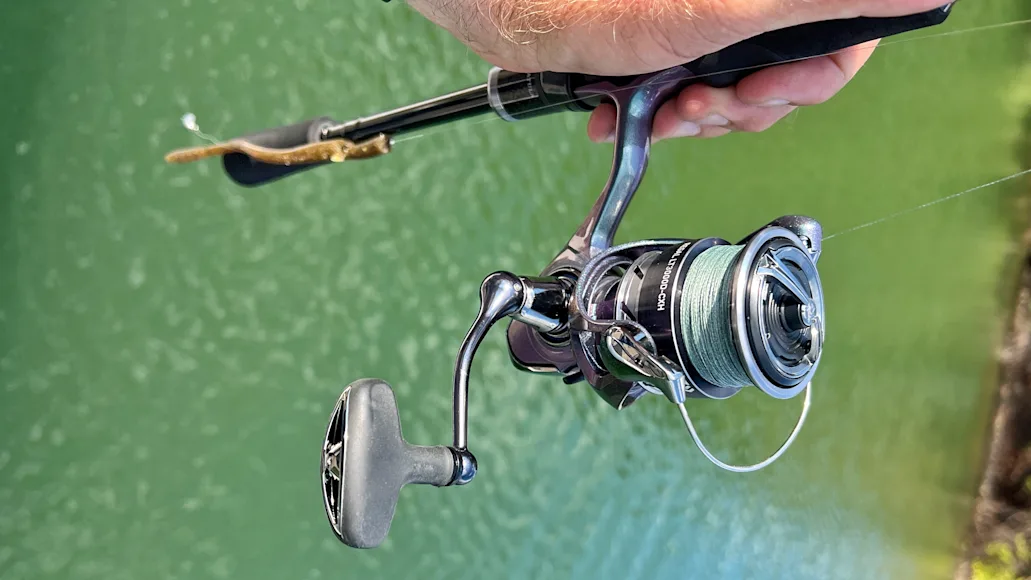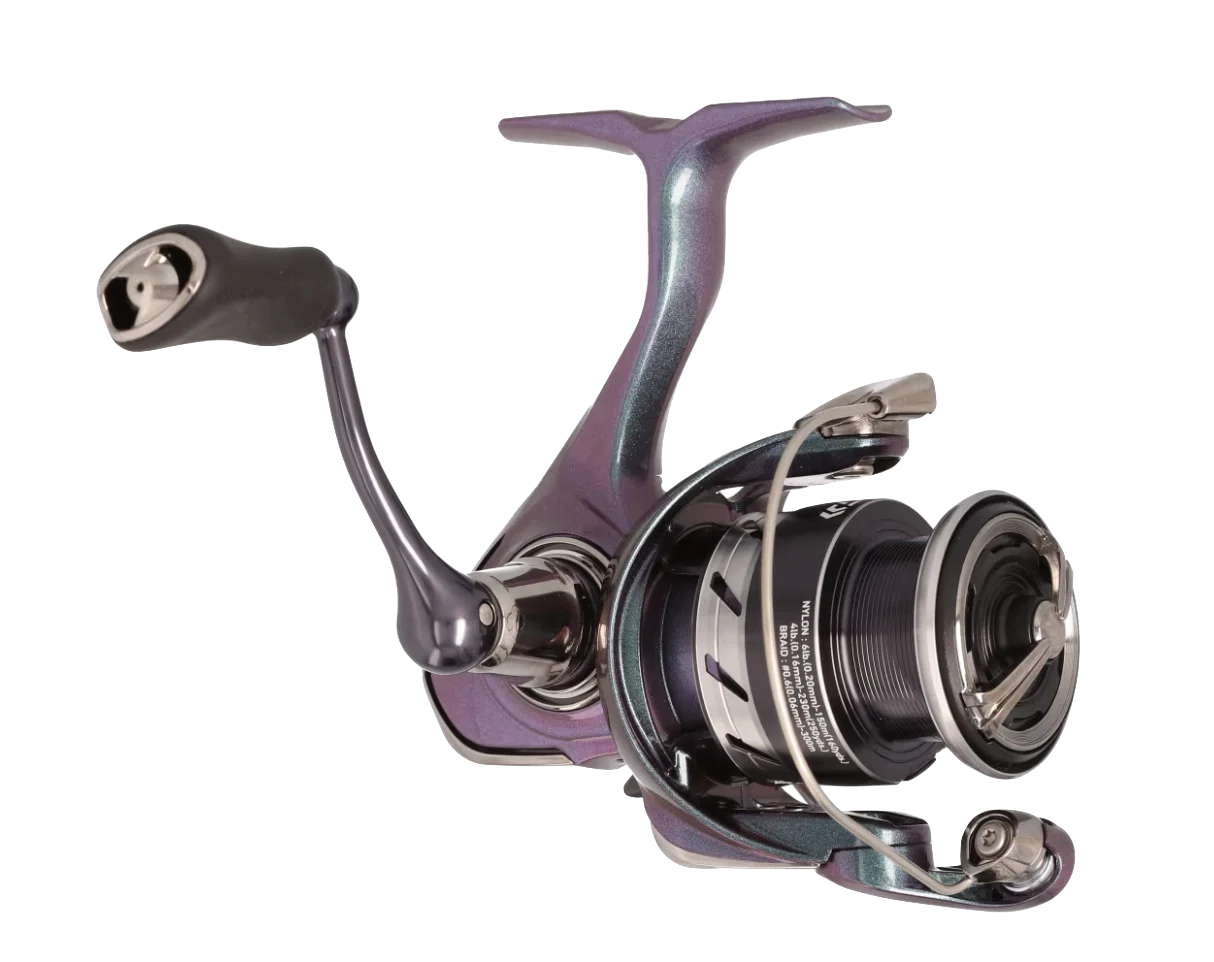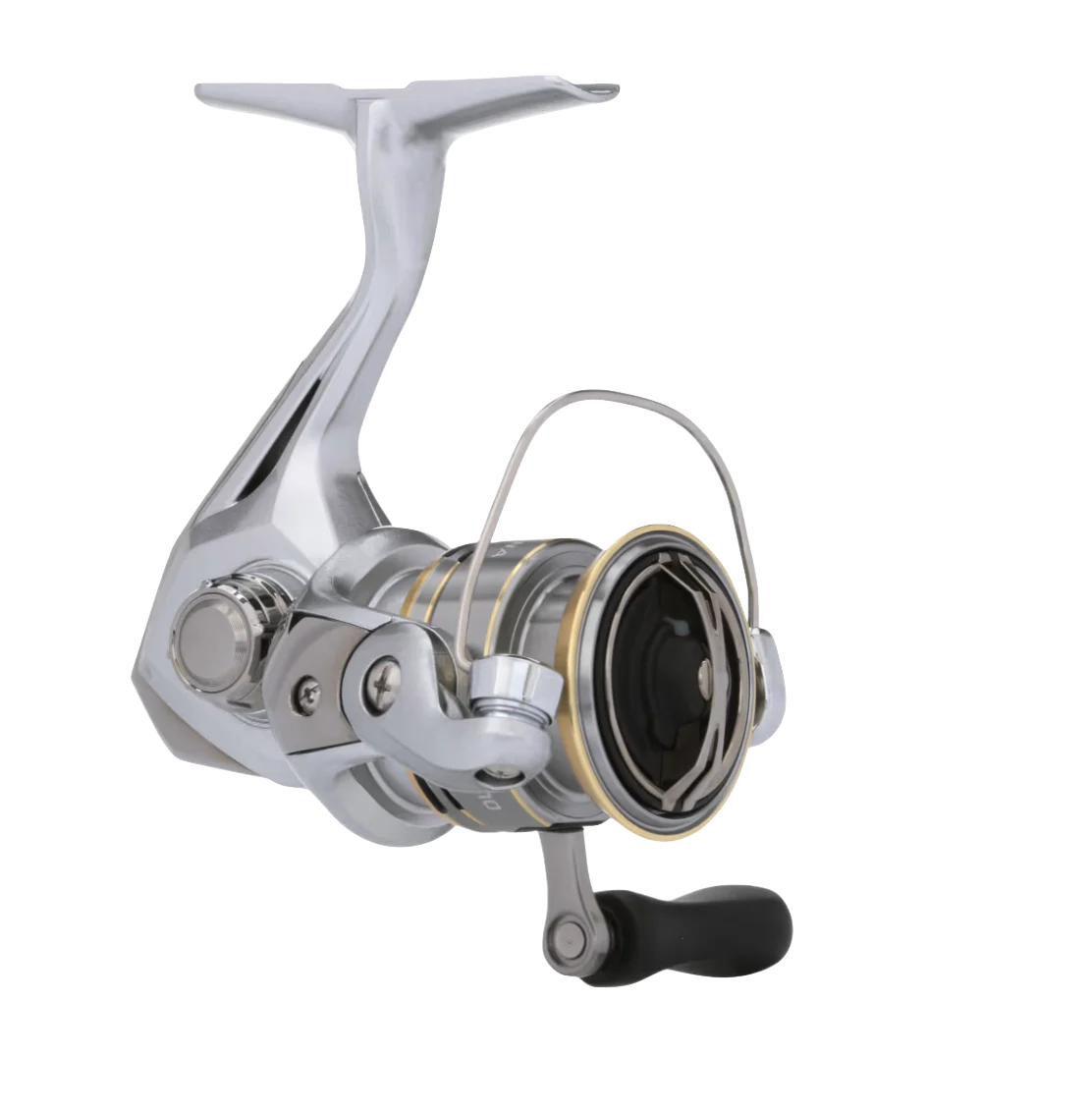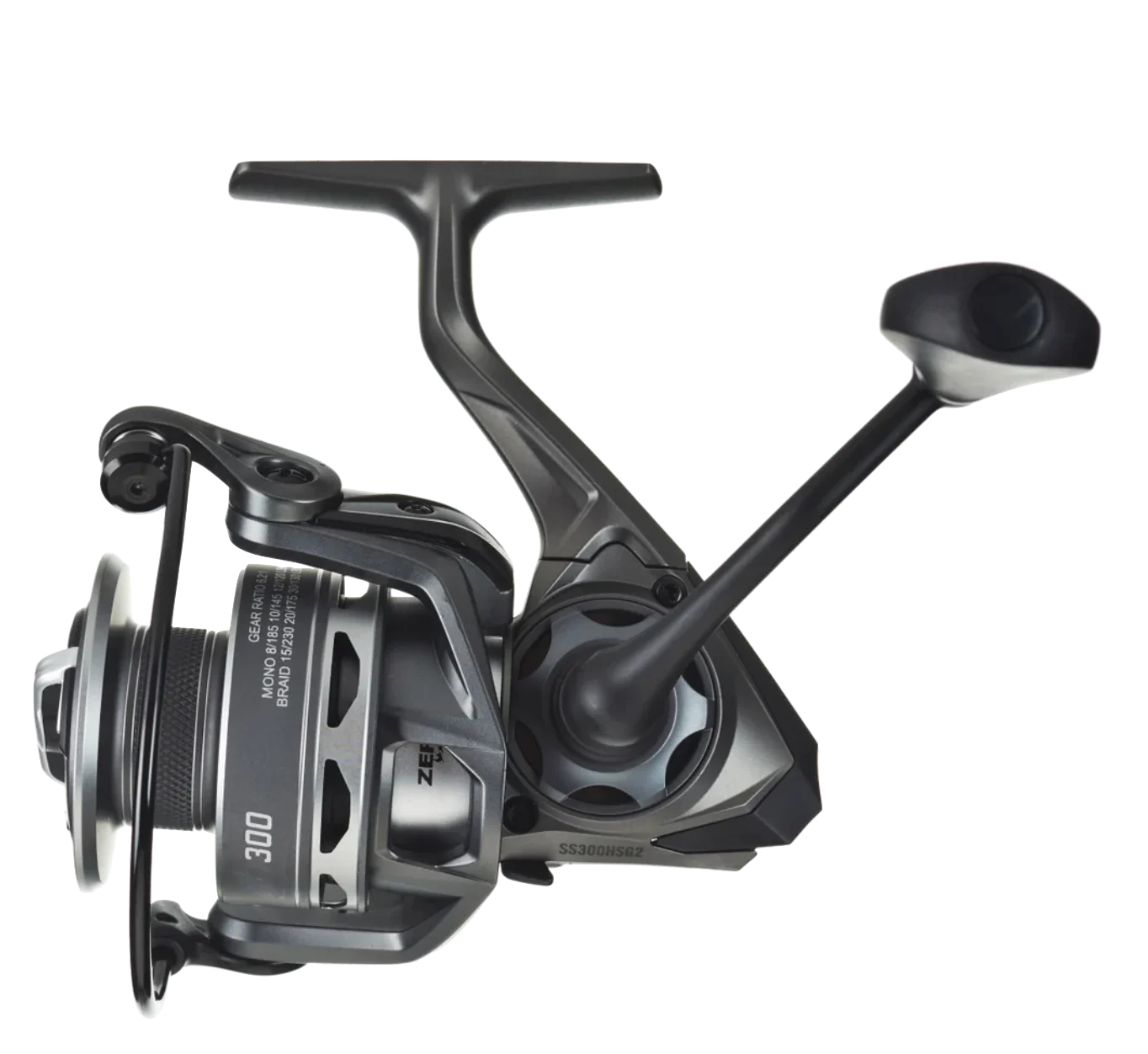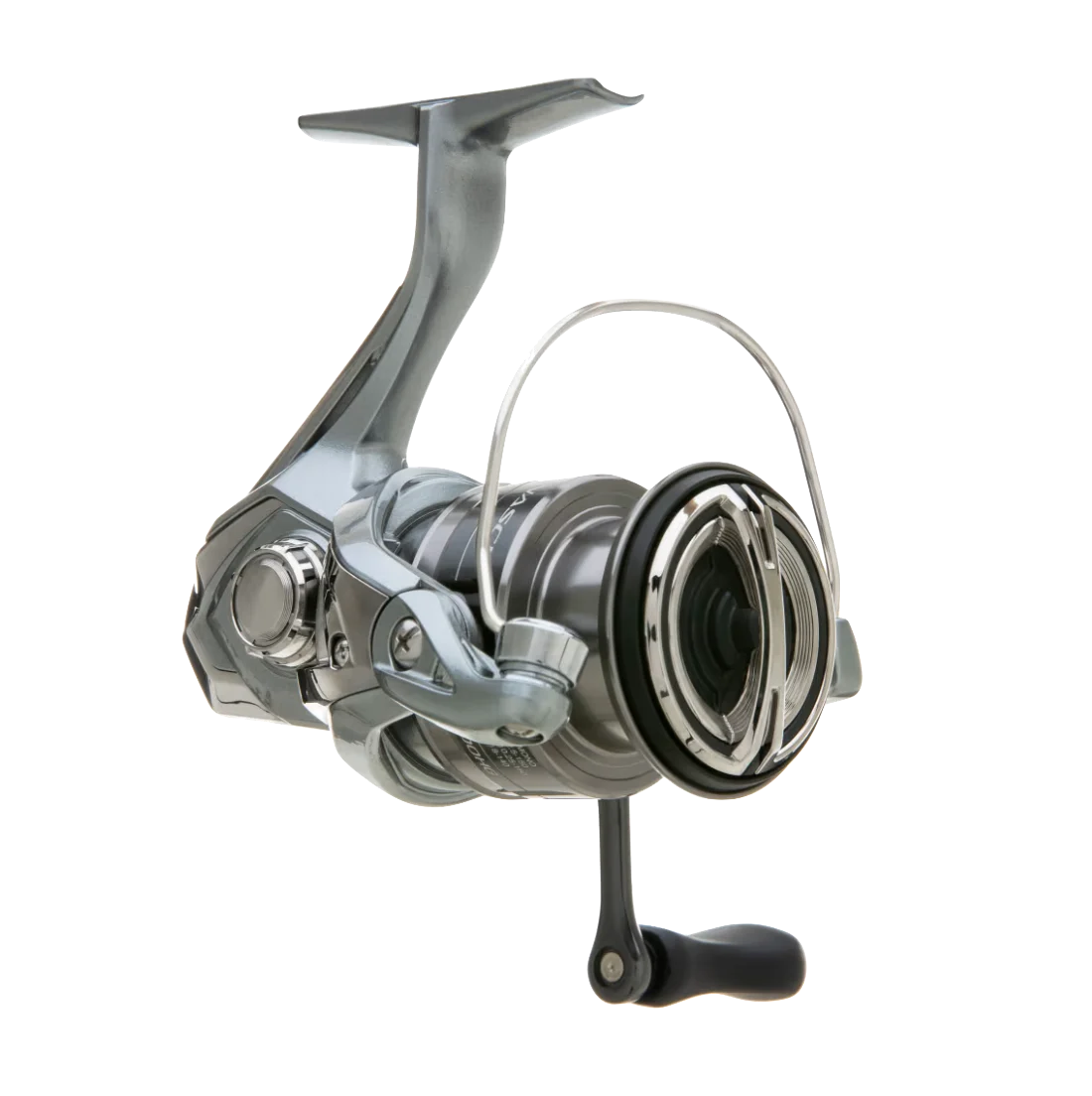We may earn revenue from the products available on this page and participate in affiliate programs. Learn more
Spinning reels are extremely versatile. They can be paired with a good dropshot rod to fish in deep water, used to reel in hair jigs across structure, or skip wacky rigs under docks for lethargic largemouth. Normally, bass specific spinning reels are used for fishing finesse-style techniques. They are also better suited than casting reels for throwing lightweight baits and for fishing lures vertically. Plus, the sensitivity and precise drag systems of spinning reels are better equipped to handle the rage of a big fish that’s pinned by a tiny hook.
Premium spinning reels can cost anywhere from $500 to $1000. And while it's nice to have the durability of and lightweight construction of top-end reels, most anglers simply can't afford it. So, I put together this lineup of reliable spinning reels that can still get the job done without sacrificing performance or breaking the bank. Here are the best spinning reels for under $100.
Best Overall: Daiwa Regal LT Spinning Reels
Best Value: Shimano Sedona FJ Spinning Reel
Best Lightweight: Lew’s Speed Spin Gen 2 Spinning Reel
Best for Bass: Shimano NASCI FC Spinning Reel
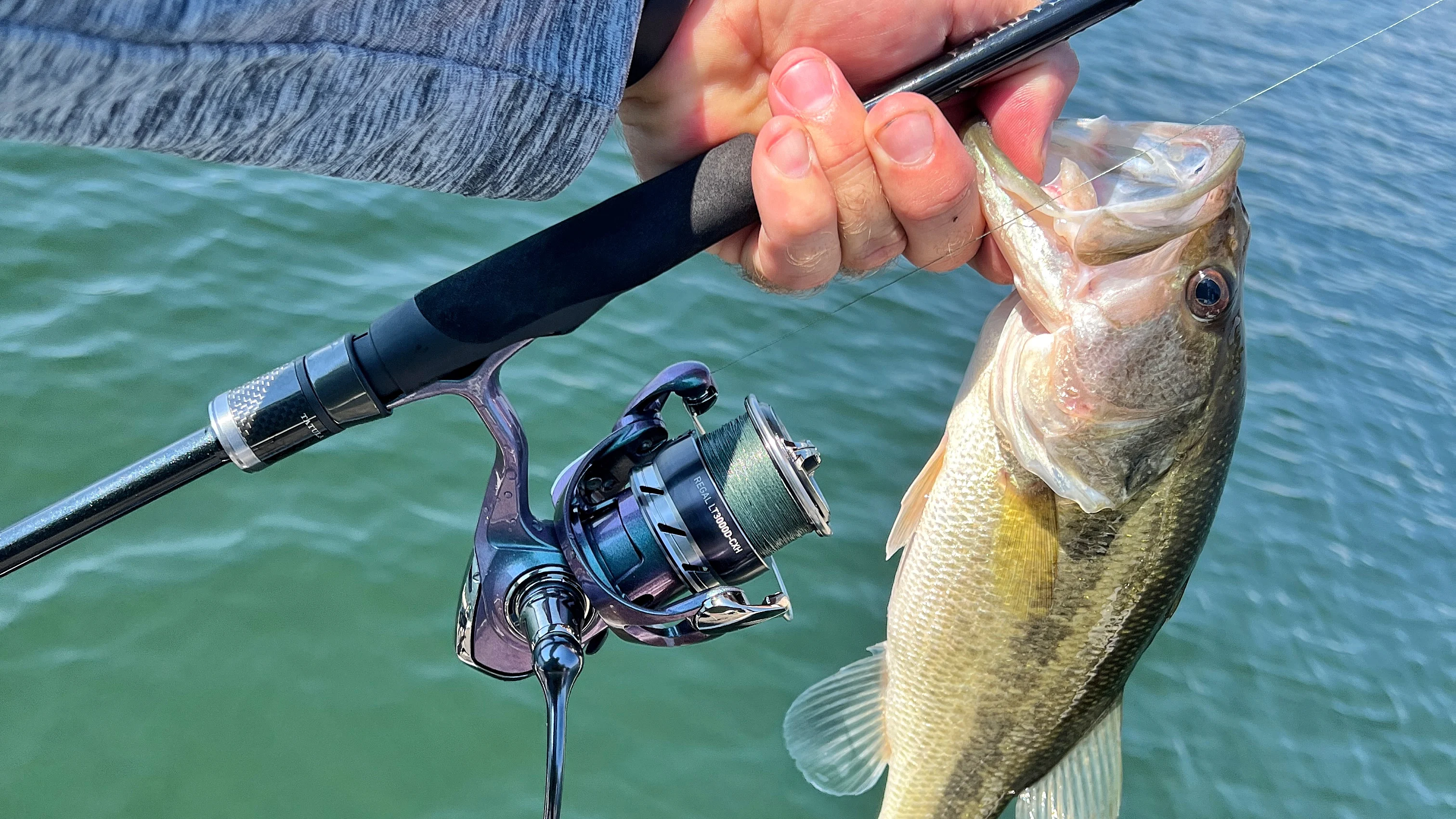
Best Overall: Daiwa Regal LT Spinning Reel
Specs
Retrieves: Right and left
Gear Ratios: 6.2:1
Bearings: 6+1
Sizes: 1000, 2000, 2500, 3000
Price: $69.99
Key Features
Zion V Body
AirDrive Rotor
AirDrive Bail
Machined Aluminum Handle
Of all the reels in the test, the Daiwa Regal LT came out on top. My test reel was a 3000 size, but I've also liked fishing the 2500. Spooled with 15-pound test braid and a 10-pound fluoro leader, the Regal made for an effective all-around spinning reel for bass fishing that I’d feel comfortable pairing with anything from a dropshot to a spybait to a wacky rig. It casts well, has a smooth drag, and was the lightest reel in the test.
The AirDrive design elements come together to reduce the weight of the reel and create smooth rotation. And while the high-tech mumbo-jumbo stuff is impressive, it was something as simple as the large flat knob that set this reel apart. It is a great reel for the novice angler as well as a solid addition to the arsenal of a seasoned weekend warrior. Plus it comes in well below the prices cutoff at $70.
Best Value: Shimano Sedona FJ Spinning Reel
Specs
Retrieves: Right and left
Gear Ratios:
Bearings:
Sizes:
Price: $74.99 to $84.99
Key Features
Hagane Gears
G-Free Body
Propulsion Line Management
One of the best Shimano reels, the Shimano Sedona FJ Spinning Reel gave the Daiwa Regal a run for its money. This is another fantastic reel for the price. I tested the Sedona in the 2500 size and was astonished at how close it performed to my classic Shimano favorite, the Stradic Ci4+. Now, the Sedona isn’t quite as good as the Stradic, but it’s pretty close—and only costs 32 percent of the price.
Much of the technology found in Shimano premium reels is also seen in the Sedona. For instance, the cold-forged Hagane gears seen in this reel are formed by putting raw metal under 200 tons of pressure. That means this reel is super durable and can handle years of abuse. It is also smooth casting and well-balanced with a great drag system. It has everything you could want in a spin reel, and it only costs $75.
Best Lightweight: Lew’s Speed Spin Gen 2 Spinning Reel
Specs
Retrieves: Right and left
Gear Ratios: 5.2:1 and 6.2:1
Bearings: 10(9 in the 75 size)
Sizes: 75, 100, 200, 300, 400
Price: $59.99
Key Features
Smooth hybrid carbon drag system
Braid-ready aluminum spool
Skeletal graphite rotor
Lightweight graphite frame
Reversible folding aluminum handle with rubber paddle knob
I actually tested the 2000 size in the Speed Spin, which is a little smaller than both the Daiwa Regal 3000 and the Shimano Sedona 2500. The Speed Spin still proved plenty big enough for skipping Senkos and other mid-range tactics. It was also a little lighter and more compact, so it was easier to handle and fish with. One feature I really like is the “braid-ready aluminum spool”. Most spools are super slick, so the braid has nothing to grip and will just spin on the spool unless you start with a little monofilament backing or add a small piece of tape to secure it. This reel, though, has a textured surface on the spool with a bunch of little teeth that grip the slick braid and allow you to cinch it down. This is a huge help and something all other spinning reel manufacturers should take note of. The Speed Spin was also the cheapest reel in the ($60) and the perfect option for new anglers or those looking to save as much as they can without giving up performance.
Best for Bass: Shimano NASCI FC Spinning Reel
Specs
Retrieves: Right and left
Gear Ratios: 5.0:1 and 6.2:1
Bearings: 5+1
Sizes: 1000, 2500, 3000, 4000, 5000
Price: $99 ($109.99 for 4000 and 5000 models)
Key Features
HAGNE Gear Technology
CoreProtect
SilentDrive
X-Ship
Propulsion Line Management
G-Free Body
Cross Carbon Drag
When polling other anglers for their opinions on the best spinning reels under $100, the NASCI FC came highly recommended. And it makes sense that this would be one of the best when you consider it’s made by Shimano and comes in at the $100 mark. Three sizes are available for $99.99 (1000, 2500, 3000), and a couple more are priced at $109.99 (4000, 5000).
When looking at the features of this reel, you find a lot of the other notable nuts and bolts that you again see in the higher-end reels made by Shimano: Hagne Gears, X-Ship, and SilentDrive. The latter “increases gear tolerances to a micron level to reduce unnecessary noise and vibration for increased reeling performance.” With these state-of-the-art technologies and design elements packed into a reel priced at $99.99, it’s easy to see why this is a top pick among bass anglers.
How We Picked the Best Spinning Reels Under $100
I started my selection process by researching spinning reels under $100 from top brands as well as the most popular purchases. I also took to my Instagram account (@shayebaker) and polled friends and followers to get a feel for what budget reels people like the most. Twenty people responded with 10 different recommendations. The Shimano NASCI FC was recommended most.
Along with the Shimano NASCI FC, the three other spinning reels on this list all have an MSRP below $100. I took these reels out on the water and tested them beside one another to see which performed the best. I judged the reels on casting ability, design, ergonomics, drag performance, power, and overall strength. Since all of these reels are budget picks, I used my notes to award only one overall winner. The rest received a full review.
What To Consider When Choosing a Spinning Reel
Frame Construction
Most reels on today’s market are going to come equipped with internal gears of brass or another alloy, but the frames of reels sold for less than a Benjamin often are made of either aluminum or graphite (a.k.a. plastic). You may find a few reels with some components crafted of carbon fiber, but in the value-priced arena, aluminum is going to be the top-of-the-line. Graphite is fine if you’re angling for smaller species, but it can flex slightly under heavy strain, which can lead to issues with gears not meshing smoothly or the rotor becoming out of balance.
Aluminum, carbon fiber and graphite all resist corrosion brilliantly and keep the overall weight of the reel down. Saltwater and brackish water found along the coast will chew away at other metals quickly and will require cleaning after every trip to prolong the reel’s life.
Weight
A few ounces can make a huge difference when it comes to a day of fishing. In addition to keeping the rod well balanced, a reel that comes in under the 8-ounce mark will actually help you feel the bite a little better when the fish are playing with their food instead of taking the bait. With less weight, you’re also able to keep the rod in perfect position throughout a long day of finesse presentations when the bite is tough.
Drag System
The drag system on a spinning reel is often the difference in landing plus-sized fish when they make a hard run at the boat. The drag allows the line to slip smoothly off the reel when enough pull is exerted on the line. Instead of allowing the line to snap, a good drag system will give the fish room and remove some of the strain.
Modern drag systems are usually made of oiled felt pads, ceramic discs or carbon fiber plates. The ceramic and carbon fiber offer a lifetime of service and resist the heat created from the friction of the rotating spool, but if you primarily chase crappie, bream or smaller saltwater species like speckled trout, a reel with an oiled felt drag system pays out line more smoothly. In either case, look for reels that have a sealed drag system, as it prevents debris from getting between the discs and causing premature wear and sticky performance.
Bearings
The number of ball bearings in the reel is critical to the smoothness of the retrieve, but it’s not just about numbers, the quality of those bearings plays a huge part in performance. Even reels with six ball bearings can offer smooth turns of the handle, and the difference in performance between six- and seven-ball bearing reels may not even be noticeable to the average angler. However, light-line specialists who keep the spinning reel in their hands all day will attest that more is definitely better when it comes to bearings.
FAQs
Q: What size spinning reel should I buy?
Spinning reel size is primarily dictated by the species you are after and the size of the fishing line and spinning rod you’re using. Finesse specialists will pay close attention to the line diameter for which the reel was designed to ensure minimal line twist. Trying to run too large of a line diameter on a small reel can cause massive headaches with loops and knots after a few hours of fishing. Ultralight rods for bream, crappie and trout also become unwieldy with a reel larger than the 20-size class.
As the species gets larger, so does the line size and reel needed to handle it. Saltwater spinning reels max out at giant 300-size class models designed for sailfish and tuna, but for the majority of freshwater gamefish, a 25- or 30-size class reel will fit the bill. Bass anglers who are going to spend a day fishing with monofilament usually opt for 30- or even 40-sized reels as the larger diameter spool can prevent the line from coiling up after being stored on the spool all day in the heat. If you’re looking for larger reels, you’re going to pay a bit more than the $100 limit I adhered to for this article.
Q: What gear ratio is best?
Speed might be the name of the game when it comes to baitcasting reels, but most spinning reels tend to be a touch slower. Most spinning reels sport a 5.2:1 gear ratio, with some bumping up the retrieve to 6.2 revolutions of the bail for every crank of the handle. While this may seem like a disadvantage, it usually does not hinder performance.
Most bass and panfish techniques requiring spinning gear call for small, lightweight lures that can’t be fished quickly anyway. The slower 5.2:1 ratio enables the line to stack smoothly back in place without incurring excess twist that can cause tangles and loops. Anglers using braided line on their spinning rods or fishing live bait without many casts can step up to the speedier reel ratios, but for day-in, day-out performance using monofilament or fluorocarbon lines, keeping the ratio under 6-to-1 will prevent plenty of headaches.
Q: How many ball bearings should a reel have?
The number of ball bearings in a reel often is used as an indicator of quality. If the bearings are of the same construction and design, then more would always be preferred. However, the quality of the bearing construction also plays a large role in the smoothness of a reel. Some reels with six high-quality, ceramic ball bearings offer much smoother performance than cheaply made reels with nine roughly finished steel bearings. Still, any spinning reel should have a minimum of four to five ball bearings to deliver enough smoothness to enhance your fishing day without feeling like you’re grinding sand in the reel’s gears. Most of my favorite spinning reels sport six or seven ball bearings and one roller bearing.
Final Thoughts
Fishing with a few of these sub-$100 reels has proven one thing—for the vast majority of us, there’s no need to spend $300 to $500 on a spinning reel. Perhaps the serious Great Lakes fishermen and the tour-level tournament pros need multiple reels in that price range, but something in the $70 range, like the Daiwa Regal LT, is impossible to beat for the money for most of us.
While the Regal LT definitely set itself apart, I was very pleased with all the reels I tested. Other honorable mentions are the Shimano Sahara, Daiwa Revros, and Pflueger President. I highly recommend giving one of these three a try before coughing up $250-plus for a higher-end reel.
Why Trust Us
For more than 125 years, Field & Stream has been providing readers with honest and authentic coverage of outdoor gear. Our writers and editors eat, sleep, and breathe the outdoors, and that passion comes through in our product reviews. You can count on F&S to keep you up to date on the best new gear. And when we write about a product—whether it’s a bass lure or a backpack—we cover the good and the bad, so you know exactly what to expect before you decide to make a purchase.

